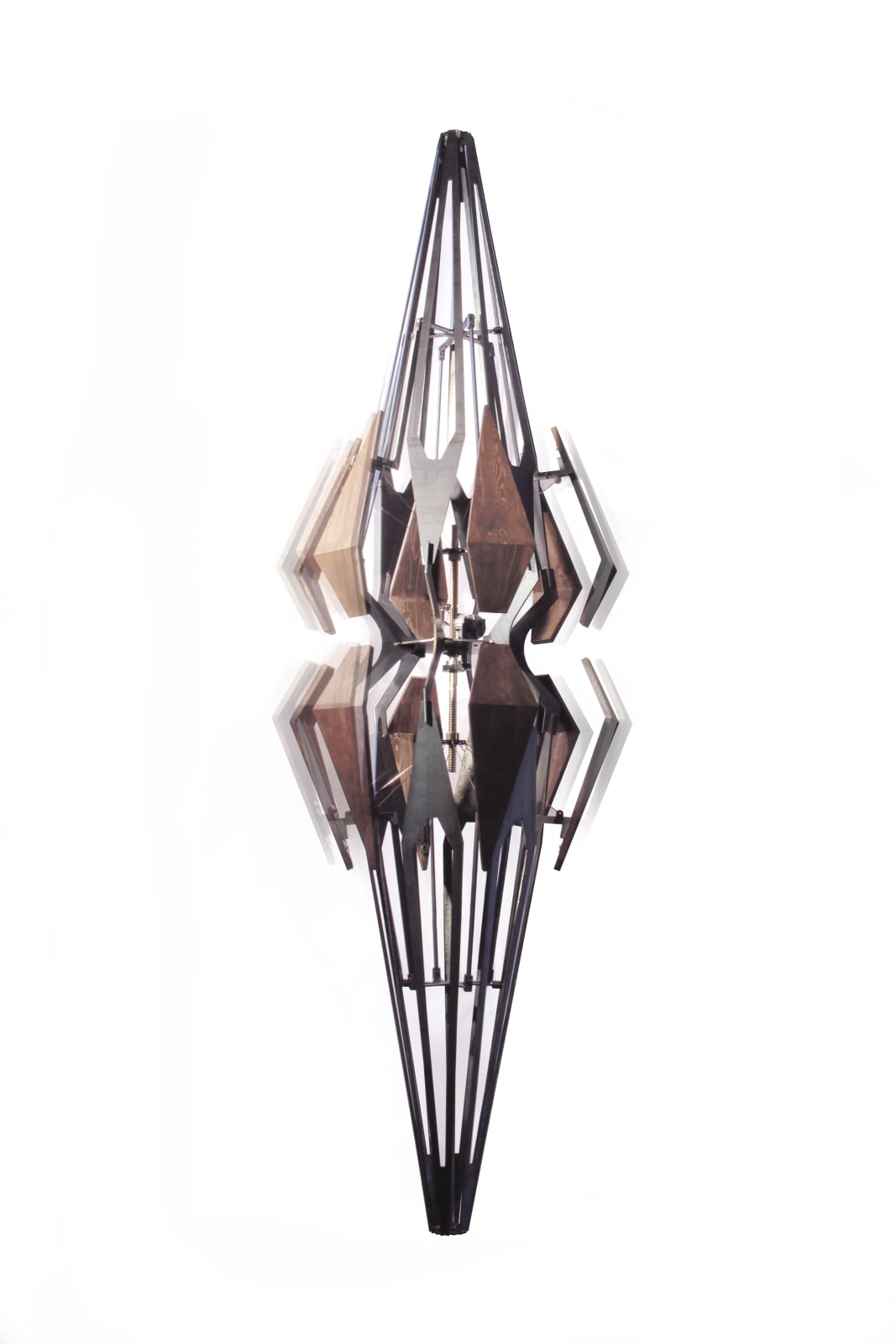"Geometry": Dastan:Outside | V-Gallery
“Geometry”, a project by Dastan:Outside, at V-Gallery (formerly 'V-Cafe’s Basement'), including works by Monir Shahroudy Farmanfarmaian, Pouya Ariyanpour, Nazgol Ansarinia, Sahand Hesamiyan, Mohammad Reza Yazdi
Dastan is pleased to announce the opening of “Geometry”, a project by Dastan:Outside, at V-Cafe’s Basement. The exhibition includes works by Monir Shahroudy Farmanfarmaian, Pouya Ariyanpour, Nazgol Ansarinia, Sahand Hesamiyan, Mohammad Reza Yazdi, and will be open for public viewing from February 17 through March 3, 2017.
Following curated exhibitions such as Mossavar-Nameh (“Book of Images,” 2015), Dastan seeks to bring out shared features in the work of modern and contemporary Iranian artists. By doing so, Dastan hopes to identify methods, styles, or movements common to the works of contemporary artists. The works displayed in Mossavar-Nameh visualized a historical-mythological narrative with intertextual references and violent humor. Geometry explores the extended course of geometrical elements within Iranian-Islamic architecture to contemporary visual arts, the extent of their influence on contemporary visual arts, and proposes ways for its return to the domain of architecture.
Architecture —at least based on the view of scholars such as Mohammadreza Haeri and orientalists like André Godard— has historically been considered an artistic medium. Iranian architects, were “heir to an order of arranging space,” and “would become historically relevant by using spatial patterns, and would connect the past to the present by adding their own spirit, which itself referred to the zeitgeist.” Architects have always been the center of attention. Their role was not separate from the work itself. In some historical periods, geometry— used by the architect and artisan alike— was a practical and scientific facet of architecture. “The Iranian architect was also an artisan, an engineer and an expert on materials,” writes Haeri. Over the course of many centuries, advancements were made in structural engineering, construction methods, and design layout. Nevertheless, from a point, the scope of what the architect was responsible for changed and different roles were given to other skilled professionals. Geometric patterns and elements were less often used, whether as decoration or as means to convey a certain mood. Architects and engineers followed different operation models.
Since geometry is the foremost visual branch of mathematics, visual arts became a new domain where geometrical elements could be experimented with and further studied. Several Iranian contemporary artists have used geometrical features in their work. A number of Iranian artists have considered the following directions in the domain of Iranian visual arts:
- Study and creation of new geometrical compositions
- Utilization of new tools and technology as well as the expertise of skilled artisans to create the independent artwork
- Addition of new dimensions to traditional methods involving geometrical compositions
- Transformation of the artwork into a sensory experience
The exhibition of "Geometry" was designed for arriving at a more consistent experience of these aspects. It is evident that the use of geometry is not exclusive to the artists included in the exhibition.
We are now at a juncture —due to advances in architecture and visual arts— to see collaborative works by architects, artists, and artisans. Such collaboration could play a more central role in our lives by incorporating art into the architectural matrix.
Several sources have been used in this study, but “The Role of Space in Iranian Architecture”, written by Mohammadreza Haeri, has played a distinct role in shaping our outlook. We have consulted other sources in the research and curatorial process of this exhibition. Fereydoun Ave’s introductory text in the catalog of “Frame Reference” (an exhibition of works by sculptor Sahand Hesamiyan) is an example. The transcription of an interview with Monir Shahroudy Farmanfarmaian conducted by Hans Ulrich Obrist, published in “Cosmic Geometry,” published by the Third Line gallery and Damiani, are other examples.































